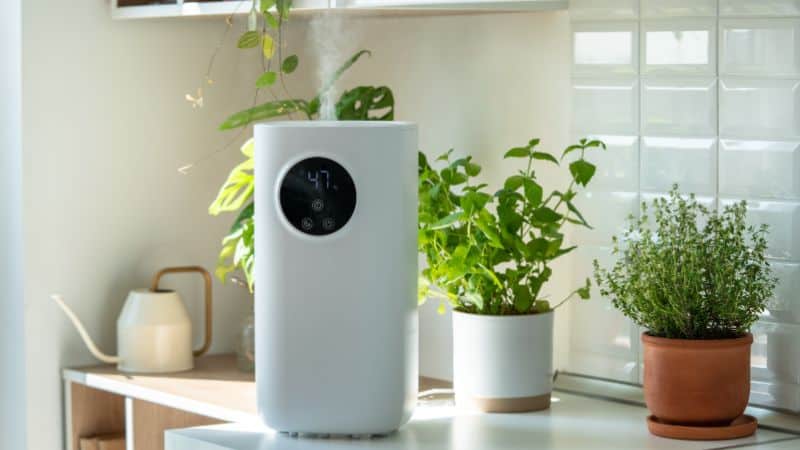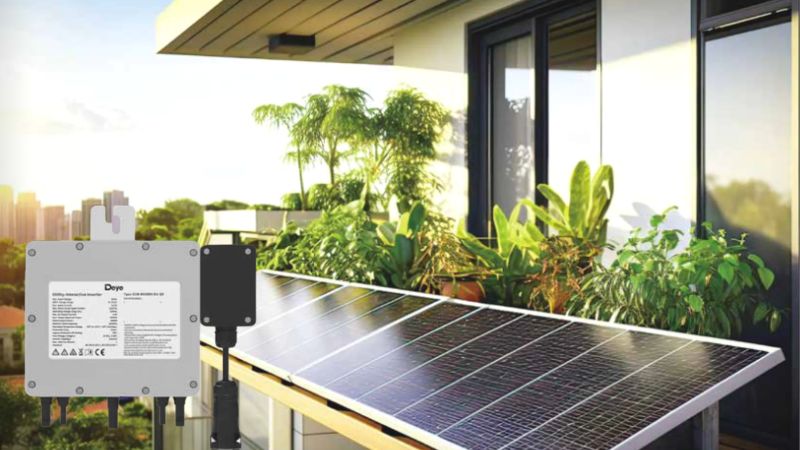Ключови изводи:
- Оптимална зимна влажност на закрито: 30-50% относителна влажност
- Ежедневно следете нивата с помощта на хигрометър
- По-ниските температури изискват по-ниска влажност, за да се предотврати кондензация
- Ползите за здравето включват по-добро респираторно здраве и комфорт на кожата
- Защитата на имуществото от подходяща влажност спестява пари в дългосрочен план

Разбиране на влажността
Какво е влажност?
Две важни измервания определят влажността във вашия дом. Относителната влажност (RH) представлява процентното съдържание на водна пара във въздуха спрямо максималния капацитет при текущата температура. Абсолютната влажност измерва действителната маса водна пара на обем въздух, обикновено измерена в грамове на кубичен метър.
Връзка температура-влажност
Различните външни температури изискват различни нива на влажност на закрито за оптимален комфорт и защита на дома:
| температура | Влажност |
| Външна температура над 50°F (10°C) | 30-50% RH |
| Външна температура 20-50°F (-6-10°C) | 30-40% RH |
| Външна температура 0-20°F (-17 до -6°C) | 20-30% RH |
| Външна температура под 0°F (-17°C) | 15-20% RH |
Значение на влажността на закрито
Влажността на закрито значително влияе върху вашето здраве, комфорт и поддръжка на дома. Изследванията показват, че поддържането на подходящи нива на влажност може да намали респираторните инфекции с до 30% и да удължи живота на дървените мебели с няколко години. Този невидим аспект на качеството на въздуха играе решаваща роля за създаването на здравословна жизнена среда.
Сезонни вариации
Зимата създава уникални предизвикателства по отношение на влажността в домовете. Студеният въздух естествено задържа по-малко влага от топлия въздух, докато отоплителните системи допълнително изсушават въздуха в помещенията. Освен това значителната температурна разлика между вътрешния и външния въздух създава рискове от кондензация, които трябва да бъдат внимателно управлявани.
Препоръчителни нива на влажност на закрито през зимата
Идеален диапазон на влажност
Като цяло, относителна влажност между 30% и 50% се счита за идеална за повечето домове. Въпреки това, през сухите зимни месеци, насочването към по-високия край на този диапазон, по-близо до 40-50%, може да бъде особено полезно.
Ползи от поддържането на оптимална влажност
Поддържането на оптимална влажност през зимата предлага няколко предимства:
- Подобрен комфорт: Подходящите нива на влажност могат да облекчат сухата кожа, раздразнените очи и дихателния дискомфорт, който обикновено се усеща при сух зимен въздух.
- Защита на домашната инфраструктура: Дървените мебели, подовите настилки и боята могат да бъдат повредени от прекалено сух въздух. Поддържането на подходяща влажност помага за предотвратяване на напукване, изкривяване и други проблеми.
- Предимства за енергийна ефективност: Влажният въздух изглежда по-топъл от сухия, така че поддържането на подходяща влажност може да ви позволи да настроите термостата си малко по-ниско, като потенциално спестявате разходи за отопление.

Фактори, влияещи върху вътрешната влажност през зимата
Няколко фактора допринасят за сухия въздух в помещенията, често срещан през зимата:
-
Отоплителни системи
Вашата отоплителна система, особено отоплението с принудителен въздух, играе важна роля. Въпреки че са ефективни при разпределянето на топъл въздух, тези системи могат също така да отстраняват влагата, което води до по-ниски нива на влажност. Други системи, като радиаторите, имат по-нежно въздействие върху влажността.
-
вентилация
Свежият въздух е от съществено значение, но зимната вентилация може да бъде нож с две остриета. Отварянето на прозорци позволява на сухия, студен външен въздух да измести по-топлия и по-влажен вътрешен въздух, намалявайки общата влажност. Ключът е да проветрявате стратегически, като балансирате приема на свеж въздух със задържане на влага.
-
Външни условия
Студеният зимен въздух по своята същност задържа по-малко влага от по-топлия въздух. Този сух външен въздух може да проникне в дома ви през пукнатини и пролуки, като допълнително намали вътрешната влажност. Правилното запечатване и изолация са жизненоважни защити срещу тази инфилтрация.
Съвети за поддържане на идеални нива на влажност на закрито
-
Използване на овлажнители
Овлажнителите добавят влага към въздуха, помагайки за борба със сухотата през зимата. Предлагат се няколко типа, включително хладна мъгла, топла мъгла и ултразвукови овлажнители. Изборът на правилния тип и правилното му използване е важно за безопасността и ефективността.
-
Стайни растения
Някои стайни растения отделят влага във въздуха чрез транспирация, като естествено повишават нивата на влажност. Изборът на подходящи растения и осигуряването на подходяща грижа може да допринесе за по-влажна среда.
-
Правилни практики за вентилация
Кратките изблици на вентилация, вместо да оставят прозорците отворени за продължителни периоди, могат да помогнат за обмен на въздух без прекомерна загуба на влага. Използването на изпускателни вентилатори в кухни и бани, докато готвите или се къпете, също помага за контролиране на влажността.
-
Наблюдавайте и настройвайте
Редовното наблюдение на нивата на влажност с помощта на хигрометър е от съществено значение. Въз основа на показанията можете да регулирате настройките на овлажнителя, отоплителната система и вентилационните практики, за да поддържате оптимална влажност.

Често срещани грешки, които трябва да избягвате
Прекомерно овлажняване на дома
Преовлажняването може да бъде също толкова проблематично, колкото ниската влажност. Признаците за преовлажняване включват конденз по прозорците, миризми на мухъл и видим растеж на мухъл.
Пренебрегване на поддръжката на влажност
Пълното пренебрегване на нивата на влажност може да има дългосрочни последици както за вашето здраве, така и за вашето имущество. Редовното наблюдение и корекциите са от решаващо значение.
Неправилно използване на овлажнители
Непочистването и поддръжката на вашия овлажнител може да доведе до растеж на бактерии и други вредни микроорганизми. Използването на грешен тип овлажнител за вашето пространство също може да бъде неефективно или дори да създаде проблеми.
Съвети за сезонна поддръжка
Подготовка на вашия дом за зимата
Подобряването на изолацията и уплътняването на течението са основни стъпки за поддържане на оптимална влажност през зимата. Тези мерки предотвратяват излизането на топъл и влажен въздух и навлизането на студен и сух въздух.
Редовни процедури за поддръжка
Редовното почистване на вашия овлажнител и отоплителна система помага да се осигури ефективна работа и предотвратява натрупването на прах, мухъл и други замърсители. Проверката и отстраняването на всякакви течове или източници на влага също е важно.
Поддържането на подходяща вътрешна влажност през зимата е от съществено значение за вашия комфорт, здраве и благосъстоянието на вашия дом. Чрез разбиране на факторите, които влияят на влажността и прилагане на съветите, посочени по-горе, можете да създадете по-здравословна и по-комфортна вътрешна среда през по-студените месеци.
Често задавани въпроси
- Какъв е най-добрият тип овлажнител за използване през зимата?
Най-добрият тип зависи от вашите индивидуални нужди и предпочитания. Овлажнителите със студена мъгла обикновено се препоръчват за домове с деца или домашни любимци, докато овлажнителите с топла мъгла могат да бъдат полезни за облекчаване на задръстванията.
- Колко често трябва да почиствам овлажнителя си?
Редовното почистване на вашия овлажнител според инструкциите на производителя е от решаващо значение за предотвратяване на растежа на бактерии и мухъл.
- Мога ли да използвам влагоуловител през зимата?
Има специфични ситуации, при които може да е необходим изсушител:
- В мазета, които имат проблеми с влагата през цялата година
- В бани с лоша вентилация
- В домове със закрити басейни или горещи вани
- В региони с мека зима, където влажността на открито остава висока
- В добре изолирани модерни домове, където се натрупва излишна влага
Обмислете използването на влагоуловител в тези специфични зони, където проблемите с влагата продължават.
Дейе предлага енергийно ефективни влагоуловители, предназначени за целогодишна употреба. Нашите ефективни влагоуловители са проектирани да поддържат оптимални нива на влажност, насърчавайки комфорта и здравето. Когато избирате изсушител за тези специализирани приложения, вземете предвид фактори като размер на помещението и ниво на влага. Продуктовата линия на Deye предоставя различни решения, които да отговарят на вашите специфични нужди.





